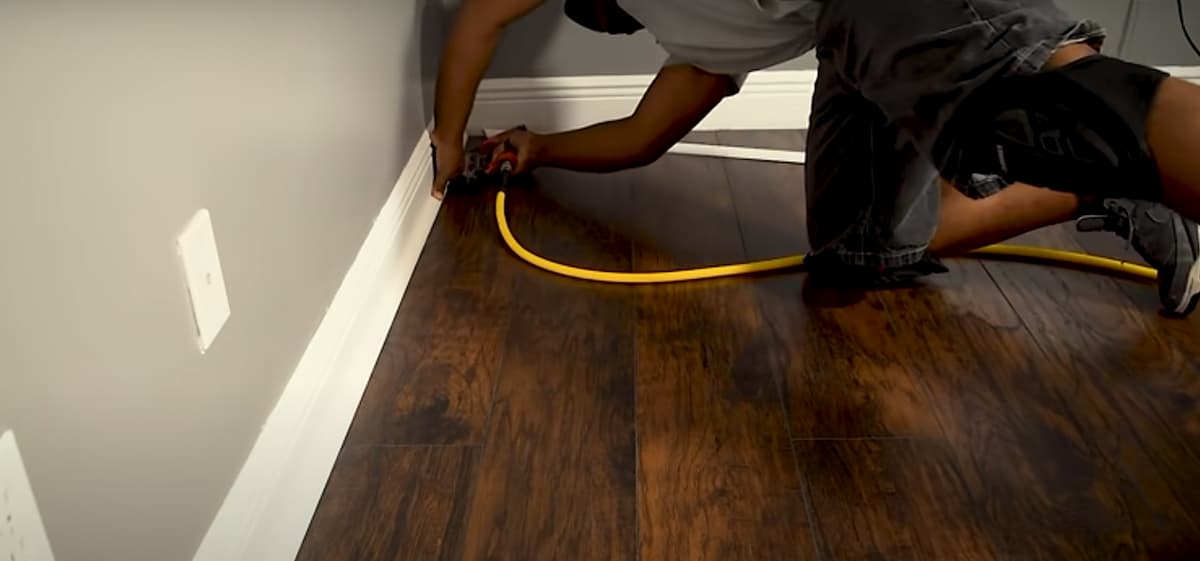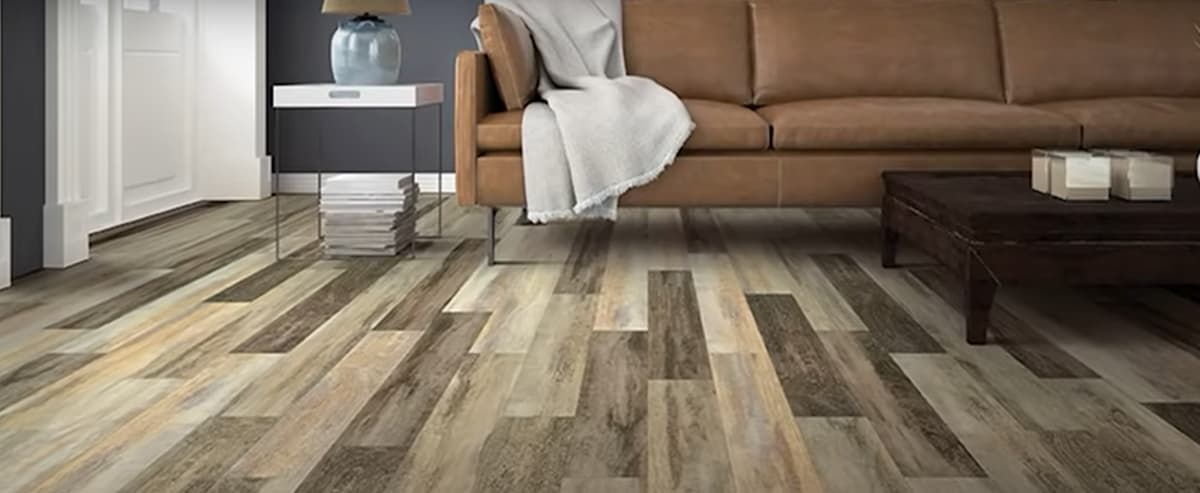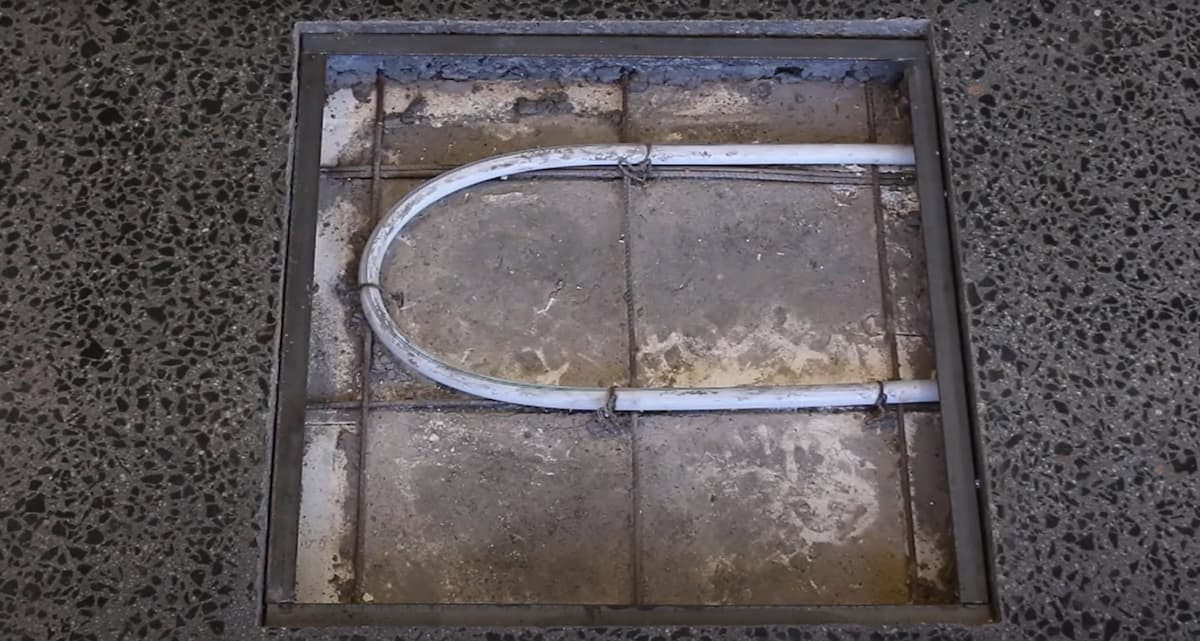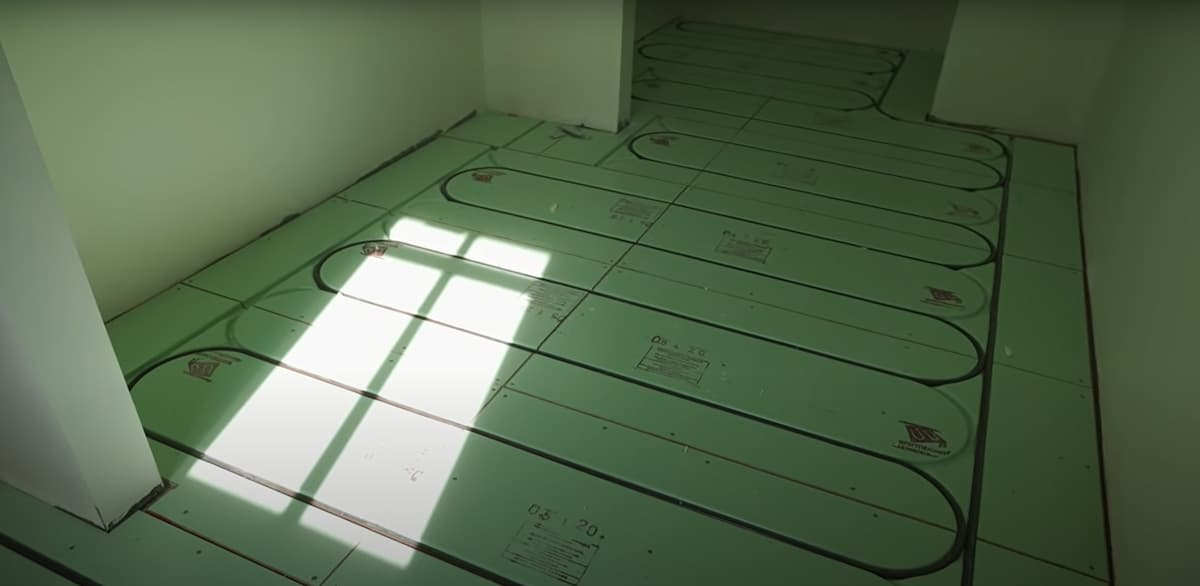If you’ve been looking for new flooring for a while, you might be perplexed when flooring sellers start discussing the benefits of floating floors. What exactly is a floating floor? Is it like a magic carpet in reverse? A floating floor is one that is constructed without the use of nails or glue to attach it to the subfloor. They are easy to put down and can be completed in a day or two, which is why they’re so popular.
Floating floorboards are a common way to provide soundproofing in houses. Floating boards are an alternative to traditional sub-flooring, which can require more maintenance and be unsightly. The advantages of floating floors include better insulation, no need for nails or glue, less chance of mould or mildew formation on the underside of the board because it’s not below ground level, and there is no wear from foot traffic because the boards do not touch the ground. The main disadvantage is that they may warp over time due to moisture changes between seasons.
But, let’s start from the beginning and cover everything related to floating floors, floating floor installation cost, types of floating flooring and much more.
Cost of Floating Floorboards
The most basic floating flooring costs approximately $15 per m2. Installing it by a professional may set you back about $36m2 (if you opt for the cheapest underlay) or around $41m2 with a superior underlay. It’s better not to skimp on the underlay, as it can serve as insulation and dampen the footsteps’ sound. 4mm thick antimicrobial underlay is more expensive, but it is a superior choice.
If you’re putting carpet upstairs, it’s a good idea to use even thicker underlay than the rest of the home to muffle footstep noise. While cheaper flooring options may work in a spare room, higher-quality floating floors and underlay are more cost-effective. Starting at about $18 per m2 for laminate flooring with a thickness of 12 millimetres, you can get it finished for around $45 to $50 per m2 if you install it yourself.
Flooring options range from $15 to $100 per m2 (or more) for solid timber. You may not need the most expensive, but you’ll pay a little extra for a floating floor that looks excellent and lasts longer. For example, high-end laminate flooring costs around $45 per m bulk and photorealistic laminate flooring costs around $60per m2.
Types of Floating Floors
Floating floors can be made of different materials including engineered wood, concrete and cork. The most suitable choice for your home may depend on your budget and the area you want to cover with it. All floating flooring types are non-combustible and resistant to water damage, which makes them great options for kitchens or bathrooms.
- Laminate flooring
- Solid timber floating floors (Hardwood flooring)
- Engineered timber flooring
- Cork flooring
- Bamboo flooring
- Vinyl flooring
While each material comes with advantages and disadvantages, many individuals like using genuine wood because it may be sanded and refinished to modify the appearance easily. Laminate floating flooring, on the other hand, utilize a plastic composite substance to give a timber look, so they are less time-consuming than real hardwood.
Floors made of wood or composite materials are often used as floating floors. With the advent of the DIY movement, people began to love this easy-to-install product. Other flooring alternatives, such as “click” flooring, may be simpler to install, but wider planks and superior quality floating floorboards tend to appear better in the end. If you want a floating floor in your living room or another high-traffic area, it’s usually preferable to hire a professional to install it. It’s also worth noting that floating floors aren’t appropriate in wet regions.
How Much do Floating Floorboards Cost?
When you begin communicating with experts, it’s critical to consider what you require. Here are a few questions to get you started:
- How much activity your flooring might get? You’ll have a lot more foot traffic if you have kids or pets (particularly dogs). For families, laminated timber flooring is an excellent investment.
- Do you need to replace your flooring? If you’re removing old flooring, the concrete foundation may need to be repaired.
- What kind of effect do you want to create with your new flooring? Consider the type of wood, texture and finish as well.
Based on this you can expect to get an estimated quote for your floating floor. Some examples:
Solid Timber Flooring Estimates
Between the price range of $80 to $130 per square meter of material, both pre-finished wood and raw wood are quite comparable. The species of wood, the thickness and breadth of each plank, as well as the number of planks, make all the difference in the world. The cost of home building materials may vary greatly depending on the variety, species, and quality.
Despite this fact, lower construction grade timber with more flaws can be found for as little as $50 to $80 per square metre, however, they are generally unsuitable for residential usage unless deliberately constructed for a rustic ambience.
The range includes a hardwood cooktop and an oven that is made of ceramic. They are both less expensive than European oak ranges, but they fit neatly within the price range.
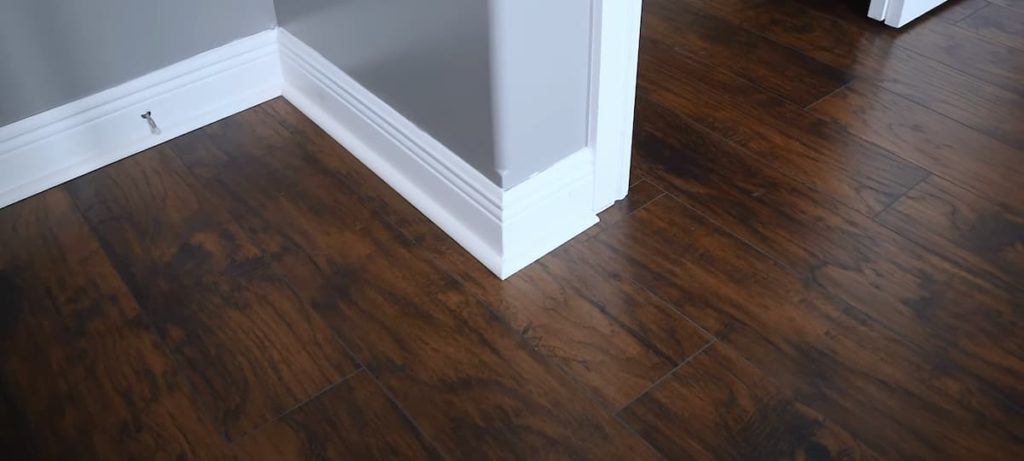
Engineered Timber Flooring
This type of flooring consists of three layers. The first wear layer is usually coated in aluminium oxide wear which is there to help protect the surface area from both water and scratches. The second part is timber veneer and it consists of real timber, usually solid timber which is usually between 2 and 6mm thick. The core board is the final piece, made of plywood. The core board is the most important piece since it helps minimise warping that may be caused by temperatures or moisture.
The cost of an engineered floating timber floor in Australia ranges from $60 to $80 per square metre for 0.2–2mm veneer through $70 to $90 per square metre for 2–4mm veneer to over $100 per square metre for 4 to 6mm veneer.
Laminate Flooring Over Existing Floor
The cost of installation depends on the laminate thickness you may employ. Laminate flooring is more expensive than hardwood flooring, with a range from $18 to $45 per square meter. It’s resistant to impacts and scratches, making it an affordable choice for pet owners that want their carpets to last as long as possible.
Waterproof laminate flooring is a wonderful option if you live in an area prone to extreme weather or have young children. Waterproof laminate flooring ranges from $40 per square meter to as much as $70 per square meter.
Vinyl Flooring Average Cost
Vinyl flooring can cost between $30 and $45 per square metre, but some high-quality vinyl planks might cost as much as $100 per square metre. Vinyl flooring is perfect for public spaces since it can endure a lot of foot traffic without getting damaged. Vinyl flooring is also pleasant to walk on, lowering noise levels.
Floating Floors Cost
The cost of a floating floor may depend on which type you choose. Solid timber floors are usually more expensive than laminate or “click” floors because they’re made of real wood. However, these types of floors may be more realistic looking, durable and environmentally friendly. Laminated floating floors are less expensive because they are made of composite materials that are moulded together to look like the real thing. For those who want an even lower-cost option, one can purchase a “click” floor product which is one solid piece of material with hundreds of small metal studs built into it to create the appearance of a traditional hardwood flooring product.
The cost also depends on how much material you purchase at once, as well as the size and type of wood. For instance, a maple engineered floor may cost between $80 and $100 per square metre, while a stained oak floor would be slightly more expensive at anywhere from $90 to over $130 per square metre.
Prices can range from as little as several hundred dollars to many thousands for an engineered timber flooring installation, depending on the size and quality of your finished product. Floating floorboard costs are based on variety and quality but usually begins somewhere around the price range of one dollar to three dollars per board foot.
Floating Floor Installation Cost
The floating floor installation cost is the total amount of money you may need to pay for your entire project. This includes the materials that are used, labour costs and any other additional fees that may be charged by the contractor. The cost alone for installing floating floors ranges from $40 to $50 per square meter, however, the price may vary depending on your location and the type of materials you choose.
The costlier a material is, the longer it lasts. This implies that durable floating flooring may be more expensive than regular ones. Durable floating floors might save you time because they require less maintenance than floating floors that are easily scuffed or ruined. The cost of underlay for a laminate floor is about $100, which includes installation. You may save money by using lower-cost underlays, nevertheless, it is essential to use high-quality underlays because they serve as insulation and sound dampeners for your floor.
Floating Timber Floors Cost
Pre-finished hardwood and raw wood are similarly priced ranging from $80 to $130 per square meter of material. The species of wood, the plank thickness and breadth, as well as the number of planks, make all the difference. Depending on the type, kind, and quality of home construction materials, costs may vary considerably
Despite this, construction-grade timber with more flaws may be had for as little as $50 to $80 per square metre, but they are generally unsuitable for residential usage unless purposefully designed for a rustic atmosphere. They’re both less expensive than European oak ranges, yet they stay within the budget. A floating floor installer may charge you as little as $50 to as much as $80, but the typical range is around $65 in Australia for floating timber installation by a professional flooring company.
Factors That Affect the Cost of Installation
Aside from the cost of each meter of floating flooring, other factors may influence the cost of a floating floor installation. Here are some things to think about while calculating the price of flooring in Australia.
- Type: Because flooring materials have varying costs, the total cost of your floating floor project may be determined by the type of floating floor you choose. Because flooring materials have different prices, expect to pay more for better ones.
- Size of Project: Simply said, a big flooring project may require more supplies and take longer to finish, which is why large projects may cost you more. Despite the fact that installers generally charge greater prices for bigger jobs, you may be able to bargain with them since they are often willing to provide larger discounts.
- The Complexity of The Job: It’s difficult to know how much it may cost to hire someone who can install a complex project. Complex projects are more difficult, time-consuming, and costly to execute, therefore they are frequently more expensive. Hiring more seasoned contractors who charge more than less-experienced ones for complicated installations is a possibility.
- Location: In addition, the cost of your floor installation may be somewhat different based on where you reside, for example, the area in which workers are needed to complete the task. There are also varying costs for materials depending on your location, so keep in mind that timber laminate flooring costs may vary from one city to the next.
- Underlay: Underlayment is a type of material that comes in rolls, and it’s typically used as an underlayment in floor installation projects. It can affect the cost of a floor installation project if you use it as an underlayer (as mentioned above). If you already have an underlay, it won’t influence the price of your completed flooring. If you want the tradie to install subfloors, be sure to include the underlay and labour charges in your quotes.


